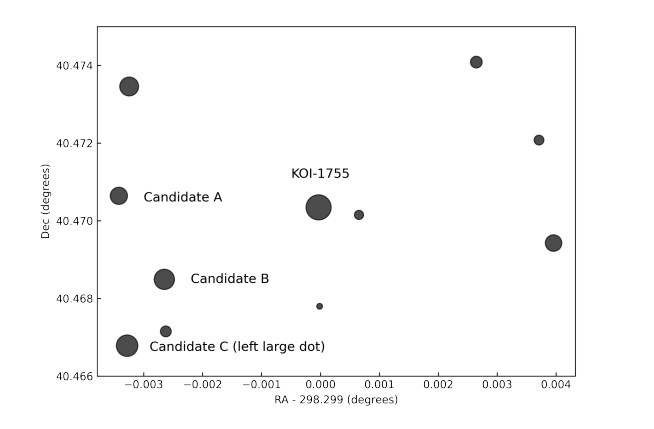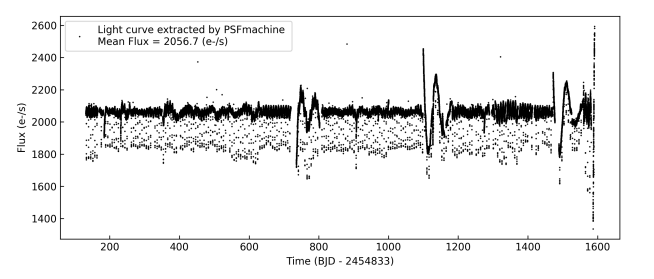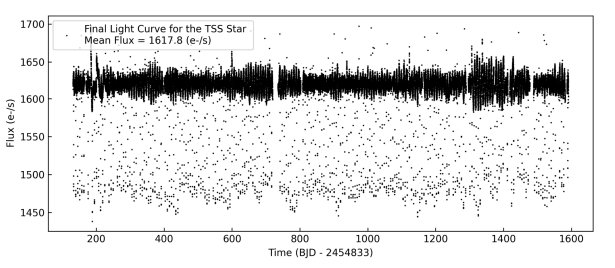

Pixel-level Analysis Reveals the True Origin of KOI-1755’s Transit Signal: Ruling out a Candidate Exoplanet
KOI-1755 is a pulsating star that also shows transit-like dimming events in its Kepler photometric data. The true origin of this signal long remained uncertain.
Recently, under the supervision of Prof. Ali Esamdin, PhD candidate WANG Haozhi from Xinjiang Astronomical Observatory (XAO), Chinese Academy of Sciences, successfully revealed the genuine source of the KOI-1755 transit signal by analyzing the Target Pixel Files (TPFs) of the Kepler space telescope. The result has been published in The Astronomical Journal.
The researchers first employed pixel-level photometric modeling, centroid-shift measurements, and cross-matching with the Gaia DR3 catalog to pinpoint the signal as originating from a background eclipsing binary located to the left of KOI-1755. Through refined modeling and contamination removal, they isolated the uncontaminated light curve of this background star directly from the TPF data, confirming it as an eclipsing binary system composed of two dwarf stars with an orbital period of about 6.14 days (see Figure 1).
Compared with existing batch-processing methods (see Fig. 2), the team’s proposed pixel-level modeling strategy significantly improves the quality of light curves. By incorporating Gaia DR3 parameters into the modeling process, it effectively avoids systematic errors caused by unaccounted contamination from nearby bright stars, resulting in a deviation of less than 3% between the system’s mean flux and the theoretical value derived from Gaia DR3 parameters (see Fig. 3).
Further analysis revealed that, in addition to clear eclipses, the binary system exhibits periodic modulations caused by starspots and differential rotation. The primary star’s rotation frequency is about 13% lower than the orbital frequency, consistent with patterns observed in other short-period binaries.
This work not only clarifies the true source of KOI-1755’s transit-like signal but also demonstrates that Kepler archival data still contain a wealth of undiscovered variable-star information. The pixel-level photometric modeling method developed in this study holds great potential for broader application to Kepler, K2, and TESS high-precision survey data, significantly enhancing the accuracy of faint variable star light-curve extraction and promoting a new stage of “second discovery” from archival data.
This research was supported by the National Key R&D Program of China, the “Tianshan Talent” Program of the Chinese Academy of Sciences, and the Natural Science Foundation of Xinjiang Uygur Autonomous Region.

Figure 1. Candidate objects near KOI-1755 responsible for the transit-like signal, with Candidate B ultimately confirmed as the true source.

Figure 2. Light curve of the background eclipsing binary obtained using the batch-processing method released by the official Kepler pipeline.

Figure 3. Light curve of the background eclipsing binary obtained in this study using pixel-level modeling with contamination removal.
Attachment Download: